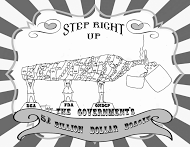The war on drugs has been raging for upwards of 70 years, and for the first time we’re starting to see a legitimate end in the near future. Medical marijuana is now legal in 20 states as well as the District of Colombia, with more and more states leaning towards this resolution each year. Since grade school, we’ve been peppered with the idea that “drugs are bad,” but studies have proven that Drug Abuse Resistance Education is wholly ineffective when it comes to the root of the problem. As with all methods of escapism, moderation is key for maintaining a healthy lifestyle. The real issue that needs to be addressed here isn’t that people are doing drugs, it’s asking why people are doing drugs, and also why they’re so widely demonized.
Most people are aware that medical marijuana is widely used to treat Glaucoma and ease side effects of chemotherapy, but did you know that it can also help in the fight against cancer cells themselves? According to cancer.gov, studies on liver cancer have shown that THC, the main chemical in marijuana, “damaged or killed the cancer cells” and displayed “anti-tumor effects.”
Medical marijuana can also be used to counteract any type of drug or syndrome which reduces appetite. There are zero recorded deaths solely due to marijuana use, because you physically can’t overdose on marijuana. The worst way marijuana is really capable of messing up your life is getting caught with it.
So why has hemp been illegal since the early 20th century? Essentially because hemp posed a serious threat to the plastic, oil and paper industries of the time. The amount of hemp that can be grown in a single acre equals the same product as four acres of that of trees. That’s four times the productivity of its contemporary industries. Essentially, hemp is and was the competition of some of the worlds most fruitful corporations. Legalize it, tax it, produce it and there’s your next year’s budget (estimated $40-100 billion dollars in revenue).
Prescription drug abuse amounts to more deaths annually than that of both cocaine and heroin combined, yet one is legal and “regulated” whereas the others are left to a black market of untold opportunity.
Right out of these covert labs the product sells for $1,500/kilogram; upon reaching the streets of places like the United States, this same exact kilogram of Cocaine can sell for as much as $50,000. Were cocaine to be legalized and thereby regulated, that profit margin would drop exponentially, while also putting a number of more subversive organizations that have made their way into our bureaucratic institutions in an uncomfortable position. In layman’s terms, there’s an economic interest involved when it comes to keeping certain drugs illegal.
Saying “well, we don’t condone this so we’re not responsible for the outcome,” doesn’t prevent the fact that people are still dying and, more importantly, families are suffering as a result because we refuse to do anything but look the other way. There’s a reason people are turning to inhibitors as a means of escaping from everyday life.
We as a society need to take the time to look at what the illegality of many of these drugs, and the consequences thereof, is doing to millions of Americans on an annual basis. There’s more to this life than simple profiteering, especially when it’s at the expense of the people, which it so very often is.
The war on drugs is yet another result of propagated ignorance. If you really want to hit the black market where it hurts, take away its main source of income. People are being sent to prison next to murderers, thieves and pedophiles for having been in possession of a large quantity of a plant grown from the ground. It’s time to wake up, America; there are better ways to address our problems than to sweep them under the rug. Legalize it, regulate it, and consequently moderate it.


Leave a Reply